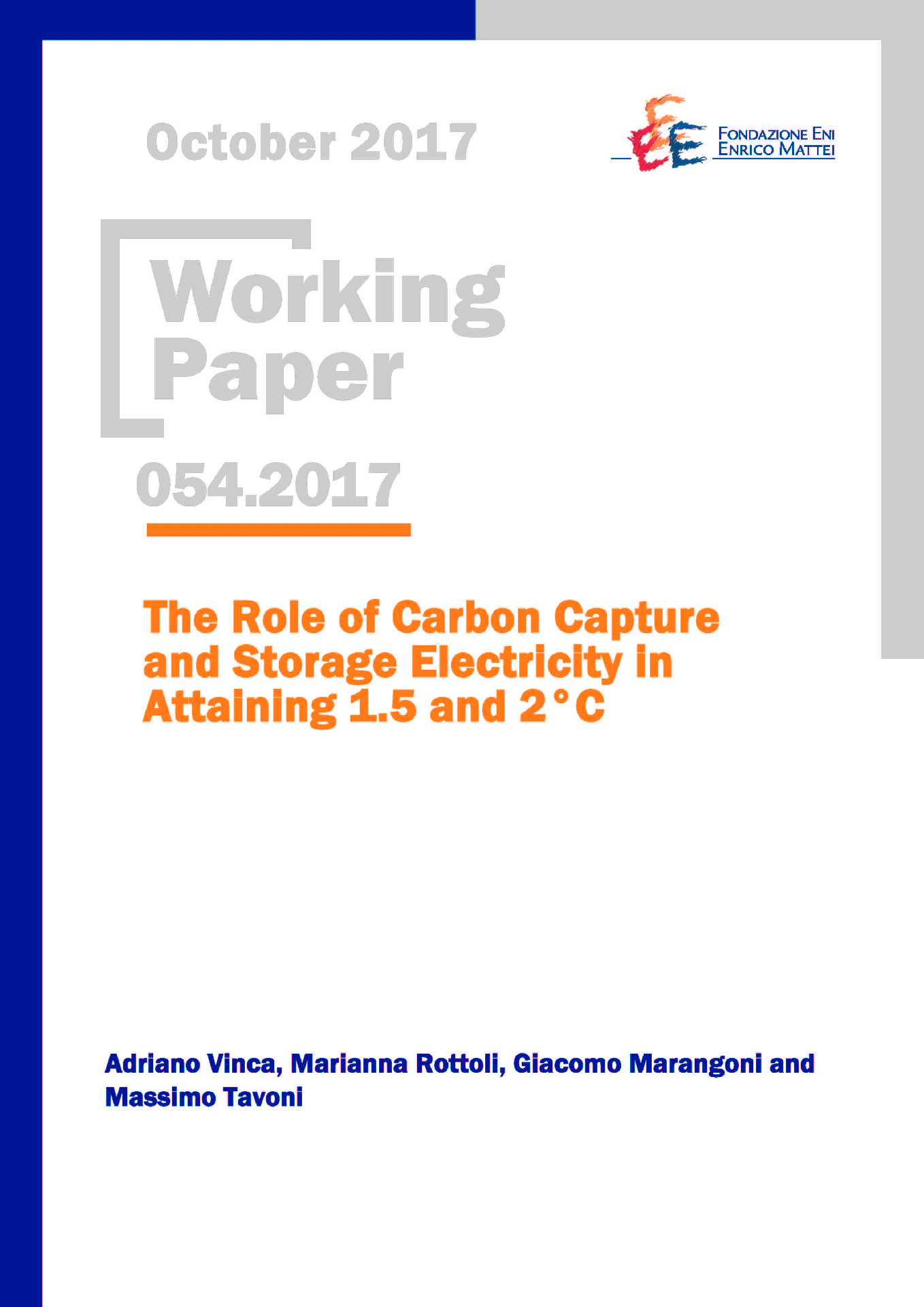The Role of Carbon Capture and Storage Electricity in Attaining 1.5 and 2°C

07.11.2017
Adriano Vinca (Fondazione Eni Enrico Mattei); Marianna Rottoli (Fondazione Eni Enrico Mattei); Giacomo Marangoni (Fondazione Eni Enrico Mattei); Massimo Tavoni (Fondazione Eni Enrico Mattei, Politecnico di Milano)
O33, Q42, Q43, Q54
Carbon Capture and Storage, Integrated Assessment Model, Climate Mitigation Policies, Electricity Sector, Low-carbon Technology
Mitigation, Innovation and Transformation Pathways
Massimo Tavoni
International Journal of Greenhouse Gas Control
The climate targets defined under the Paris agreement of limiting global temperature increase below 1.5 or 2°C require massive deployment of low-carbon options in the energy mix, which is currently dominated by fossil fuels. Scenarios suggest that Carbon Capture and Storage (CCS) might play a central role in this transformation, but CCS deployment is stagnating and doubts remain about its techno-economic feasibility. In this article, we carry out a throughout assessment of the role of CCS electricity for a variety of temperature targets, from 1.5 to above 4°C, with particular attention to the lower end of this range. We collect the latest data on CCS economic and technological future prospects to accurately represent several types of CCS plants in the WITCH energy-economy model, We capture uncertainties by means of extensive sensitivity analysis in parameters regarding plants technical aspects, as well as costs and technological progress. Our research suggests that stringent temperature scenarios constrain fossil fuel CCS based deployment, which is maximum for medium policy targets. On the other hand, Biomass CCS, along with renewables, increases with the temperature stringency. Moreover, the relative importance of cost and performance parameters change with the climate target. Cost uncertainty matters in less stringent policy cases, whereas performance matters for lower temperature targets.
***
Suggested citation: Vinca, A., M. Rottoli, G. Marangoni, M. Tavoni, (2018), ‘The Role of Carbon Capture and Storage Electricity in Attaining 1.5 and 2°C’, International Journal of Greenhouse Gas Control, Volume 78, 2018, Pages 148-159, ISSN 1750-5836, https://doi.org/10.1016/j.ijggc.2018.07.020i
